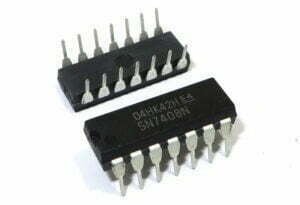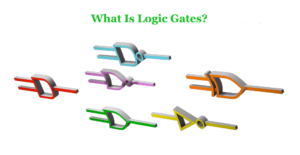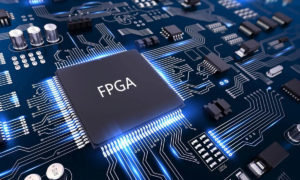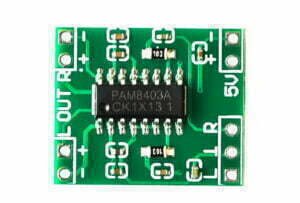Comprehensive Guide to EMC Compliance
Exploring Design and Certification for Complex PCB Layouts
I. Introduction: Why EMC is Crucial
In the world of modern electronics, printed circuit boards (PCBs) have become the backbone of countless devices. As technology advances, PCBs are becoming more complex, packed with a greater number of components and higher operating frequencies. With this increasing complexity comes a crucial challenge: achieving Electromagnetic Compatibility (EMC) compliance.
Electromagnetic Compatibility (EMC) is the ability of a device to function properly in its electromagnetic environment without introducing intolerable electromagnetic disturbances to other devices. It encompasses both emissions and immunity.
II. Core Design Challenges
High Component Density
Increased risk of crosstalk, restricted physical separation, and potential thermal issues.
High-Speed Signals
Prone to signal integrity issues and electromagnetic radiation, increasing design complexity.
Complex Power Networks
Multi-voltage domains and power converters are major sources of conducted EMI.
III. Best Practices for EMC-Compliant PCB Design
Mastering the essentials from layout to grounding.
Layout Planning
The first and most critical step in EMC compliance is meticulous layout planning. This involves physically dividing the PCB into distinct functional zones (e.g., analog, digital, RF), and grouping components based on function to minimize interference. It is also crucial to orient components in a way that minimizes signal path length and keeps noisy components away from sensitive ones.
- Partitioning: Create clear separation between different circuit sections to prevent noise from coupling.
- Placement: Place high-frequency components close to their connectors to reduce EMI loop areas.
- Stack-up: A well-designed PCB layer stack-up with dedicated power and ground planes is fundamental to containing EMI.
Signal Routing Techniques
Signal routing is the art of controlling the paths of current on the board. The fundamental principles include minimizing trace lengths and loop areas, avoiding sharp angles, and controlling trace spacing to prevent crosstalk. For high-speed signals, using differential pairs and controlled impedance routing is non-negotiable.
- Short and Direct: Keep all signal traces as short and direct as possible to minimize antenna effects.
- Return Paths: Ensure all signal traces have a low-impedance return path, typically a solid ground plane, immediately adjacent to the signal trace.
- Differential Pairs: For high-speed signals, route differential pairs close together and maintain symmetry to cancel out common-mode noise.
Power Management Strategies
A clean and stable power supply is a prerequisite for EMC compliance. Proper power management involves using multiple decoupling and bypass capacitors strategically placed near power pins to suppress high-frequency noise. Additionally, power planes must be solid and continuous to provide a stable reference and low-impedance path for current.
- Decoupling Capacitors: Place these capacitors as close as possible to the power and ground pins of integrated circuits.
- Power Planes: Use solid planes to provide a low-impedance distribution network and reduce ground bounce.
- Filtering: Utilize EMI filters like ferrite beads on power lines to block high-frequency noise from spreading.
Advanced Grounding Strategies
Grounding is the foundation of EMC design. A continuous, solid ground plane is crucial for providing a low-impedance return path for signals and power. Strategies such as splitting ground planes for analog and digital sections and using ground stitching vias can prevent noise coupling and minimize ground loops, which are common sources of EMI.
- Solid Ground Plane: The primary tool for minimizing EMI. Provides a stable voltage reference and a short return path.
- Ground Stitching: Use vias to connect different ground planes or sections, especially around high-speed traces, to ensure continuity.
- Avoiding Ground Loops: Ensure that return paths are well-defined and avoid large, unintended loops that can act as antennas.
Shielding and Filtering
Shielding and filtering are complementary techniques used to contain or suppress EMI. Shielding, often in the form of a metal enclosure or a shield can, physically blocks electromagnetic radiation. Filtering, through the use of components like ferrite beads and common-mode chokes, blocks unwanted high-frequency noise from entering or leaving a circuit through its power or I/O lines.
- Enclosure Shielding: A metallic enclosure or coating can prevent radiation from internal components from escaping.
- Filtering: EMI filters are used at all I/O and power entry points to prevent conducted noise from entering or leaving the system.
- Component Shields: On-board metal cans can be used to isolate particularly noisy components.
IV. EMC Compliance Simulation & Testing
From virtual prediction to physical verification.
Pre-Layout Simulation
Using simulation tools like Ansys SIwave, designers can predict and prevent EMC problems early in the design cycle. This virtual testing significantly improves efficiency and avoids costly redesigns. Studies show that a significant percentage of products fail their first EMC test, highlighting the importance of pre-emptive preparation.
Post-Layout Physical Testing
Physical testing is the final and essential verification step. This includes radiated emissions, conducted emissions, and immunity tests (e.g., ESD, EFT) to confirm the PCB meets all required EMC standards and regulatory mandates.
Common EMC Tests
| Test Type | Purpose | Standard |
|---|---|---|
| Radiated Emissions | Measures unintentional electromagnetic energy | CISPR 32 |
| Conducted Emissions | Measures energy propagated along power/signal lines | FCC Part 15 |
| ESD | Assesses immunity to electrostatic discharge | IEC 61000-4-2 |
| EFT | Assesses immunity to rapid high-voltage pulses | IEC 61000-4-4 |
V. Navigating Global EMC Standards
Understanding market entry regulations.
| Region/Organization | Primary Regulation | Scope | Compliance Mark |
|---|---|---|---|
| 🇪🇺 European Union (EU) | EMC Directive 2014/30/EU | Non-radio electrical/electronic equipment | CE Mark |
| 🇪🇺 European Union (EU) | Radio Equipment Directive (RED) 2014/53/EU | Radio equipment | CE Mark |
| 🇺🇸 United States (US) | FCC Part 15 | Radio frequency devices | FCC Declaration of Conformity |
| 🇯🇵 Japan | PSE Law / VCCI | General electrical goods / IT equipment | Specific marks / VCCI Mark |
| 🇨🇦 Canada | ISED Canada Standards | Radio apparatus | ISED Certification |
| 🌐 International | CISPR / IEC | Basic, generic, and product standards | Serves as a reference for regional regulations |
VI. Case Studies: Lessons Learned
Learning from success and failure.
Success Story: High-Performance Computing PCB
In a complex high-performance computing PCB, the design team meticulously implemented a strategy of functional partitioning, optimized signal routing with controlled impedance, multi-layer power management, and a multi-point grounding scheme. The dedicated ground planes provided a robust return path for high-speed signals, and careful placement of decoupling capacitors minimized power supply noise. As a result, the board passed all radiated and conducted emissions tests on the first attempt, confirming the effectiveness of a proactive, comprehensive design approach.
Takeaway: Proactive, comprehensive design is the key to first-pass success.
Failure Story: Consumer Electronics Device
A consumer device failed its EMC radiated emissions test due to an oversight in the PCB layout. The compact design forced the team to place a high-speed clock trace too close to a noisy power converter, and an insufficient grounding scheme created a large ground loop. This acted as an antenna, radiating electromagnetic interference above the regulatory limits. The lack of proper filtering on I/O lines also contributed to conducted emissions. The failure resulted in a costly and time-consuming redesign, significant financial loss, and a damaged brand reputation.
Lesson: Neglecting even a single EMC principle can lead to costly and reputation-damaging failures.
VII. Conclusion: Future-Proofing PCB Design
EMC compliance is a strategic element of product quality and market success.
By integrating EMC considerations from the very beginning of the design process, adopting a holistic approach, and continuously learning and adapting to new technologies, designers can create resilient products that not only meet regulations but also operate reliably in increasingly complex electromagnetic environments. The future of EMC is about moving beyond mere compliance to achieve design excellence.





